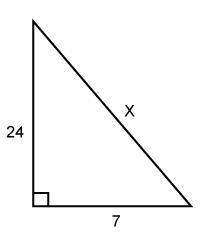
Mathematics, 07.11.2019 20:31 moowalden1239
The national institute of standards and technology (nist) supplies "standard materials" whose physical properties are supposed to be known. for example, you can buy from nist a copper sample whose melting point is certified to be 1084.80°c. of course, no measurement is exactly correct. nist knows the variability of its measurements very we, so it is quite realistic to assume that the population of all measurements of the same sample has the normal distribution with mean μ equal to the true melting point and standard deviation σ = 0.25°c. six measurements on the same copper sample, which is supposed to have melting point 1084.80°c, are provided. 1084.55 1084.89 1085.02 1084.79 1084.69 1084.86 nist wants to give the buyer of this copper sample a 90% confidence interval for its true melting point. what is this interval? to access the complete data set, click the link for your preferred software format excel minitab jmp spssti r mac-txt pc-txt csv crunchit! state: choose the correct problem statement. what is the true melting point of this copper sample? o what is the true melting point of copper? is the true melting point of this copper sample equal to 1084.80°c? o what is the true mean of this sample of six measurements of the copper sample? plan: choose the best plan for finding the answer to the question of the state step we will estimate the true melting point, s (the standard deviation of all the measurements of its melting point), by o we will estimate the true melting point, i (the mean of all the measurements of its melting point, by giving a 90% o we will estimate the true melting point. ơ (the standard deviation of all the measurements of its melting point), by o we will estimate the true melting point, (the mean of all the measurements of its melting point), by giving a 90% giving a 90% confidence interval. confidence interval giving a 90% confidence interval. confidence interval solve: calculate a 90% confidence interval (a, b), (enter your answers rounded to four decimal places.) conclude: what conclusion can we make? o we cannot make any conclusion about the copper sample's true melting point from this data. o we are 90% confident that the mean of the six melting point measurements of the copper sample is between a and o there is a 90% probability that the copper sample's true melting point is between a and b o we are 90% confident that the copper sample's true melting point is between a and b

Answers: 1


Another question on Mathematics

Mathematics, 21.06.2019 22:00
Given the quadratic function f(x)=3x^2-24x+49 a. use “completing the squares” to convert the quadratic function into vertex form b. state the vertex c. find the x and y intercepts d. graph the function
Answers: 1

Mathematics, 21.06.2019 22:30
Fast! find the length of cu. the triangles are similar. show your work.
Answers: 2

Mathematics, 21.06.2019 23:00
Janie has $3. she earns $1.20 for each chore she does and can do fractions of chores. she wants to earn enough money to buy a cd for $13.50.
Answers: 2

Mathematics, 22.06.2019 00:30
Brent paid for 6 avocados with a $20.00 bill. he received $10.40 in change. construct and solve an equation can be used to find the price , of each avocados
Answers: 1
You know the right answer?
The national institute of standards and technology (nist) supplies "standard materials" whose physic...
Questions

Mathematics, 05.01.2021 22:00

Health, 05.01.2021 22:00

Geography, 05.01.2021 22:00

English, 05.01.2021 22:00

History, 05.01.2021 22:00



Mathematics, 05.01.2021 22:00


History, 05.01.2021 22:00

Chemistry, 05.01.2021 22:00

Mathematics, 05.01.2021 22:00

Mathematics, 05.01.2021 22:00


Mathematics, 05.01.2021 22:00

English, 05.01.2021 22:00


Spanish, 05.01.2021 22:00







